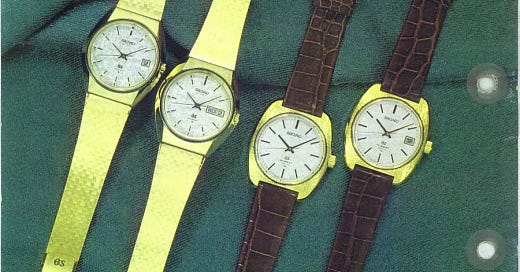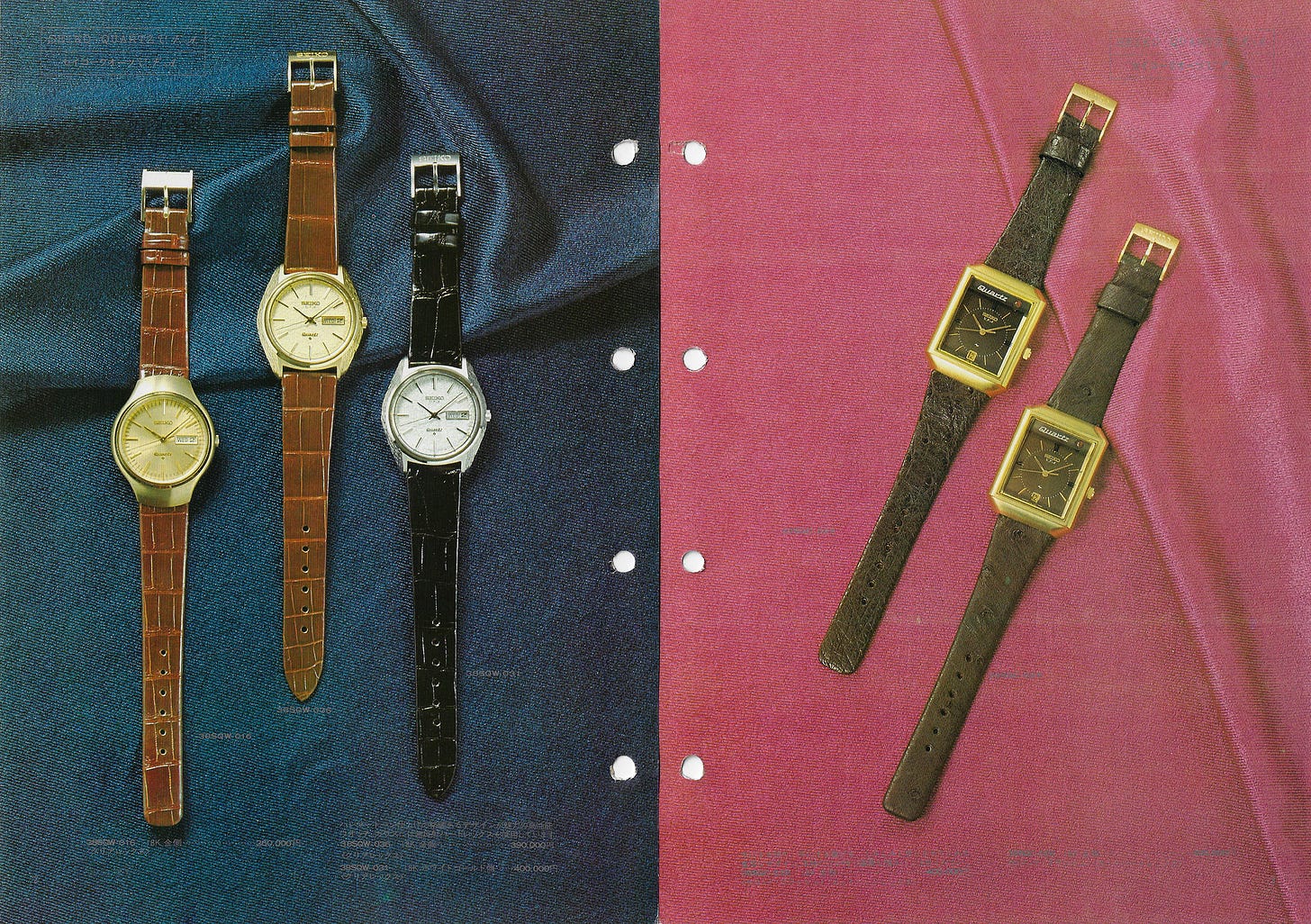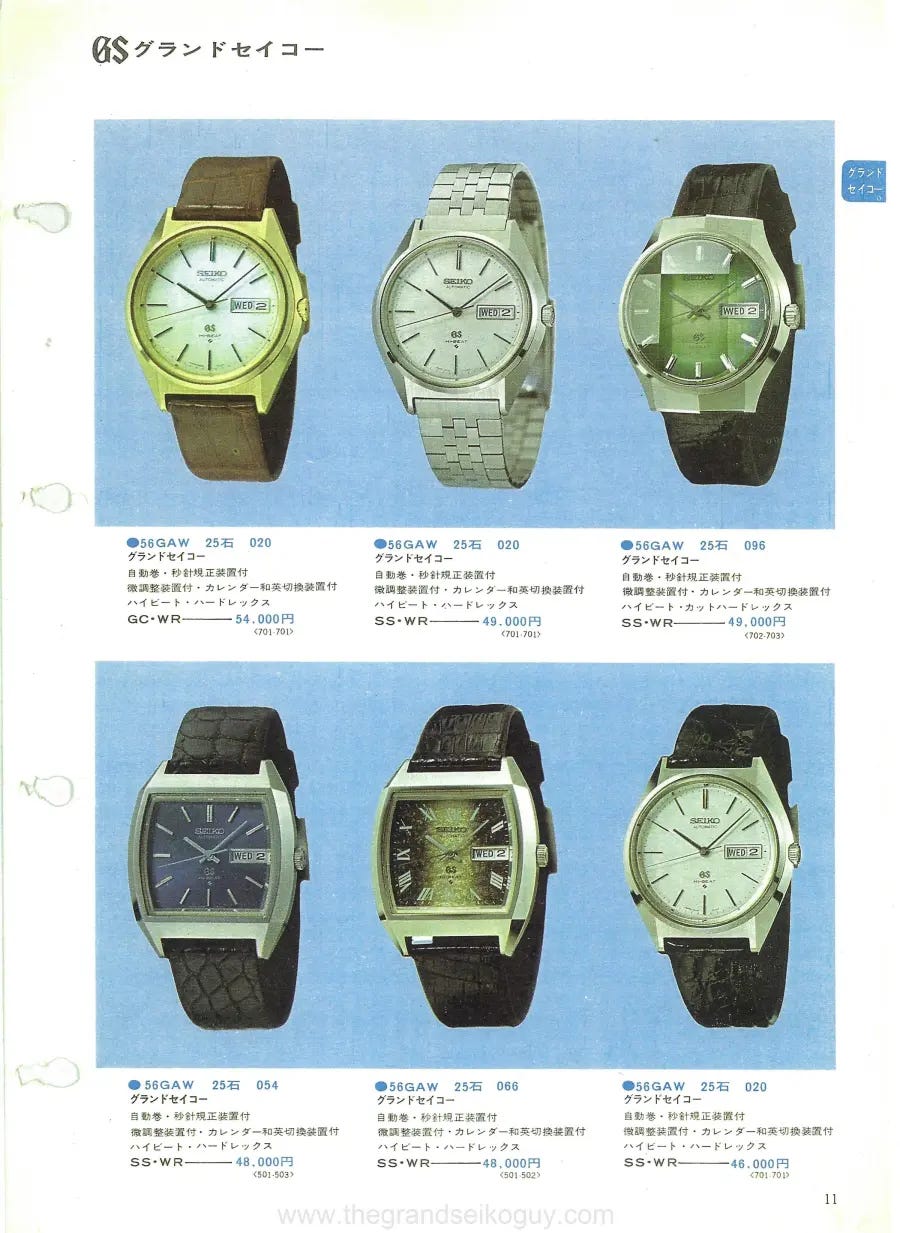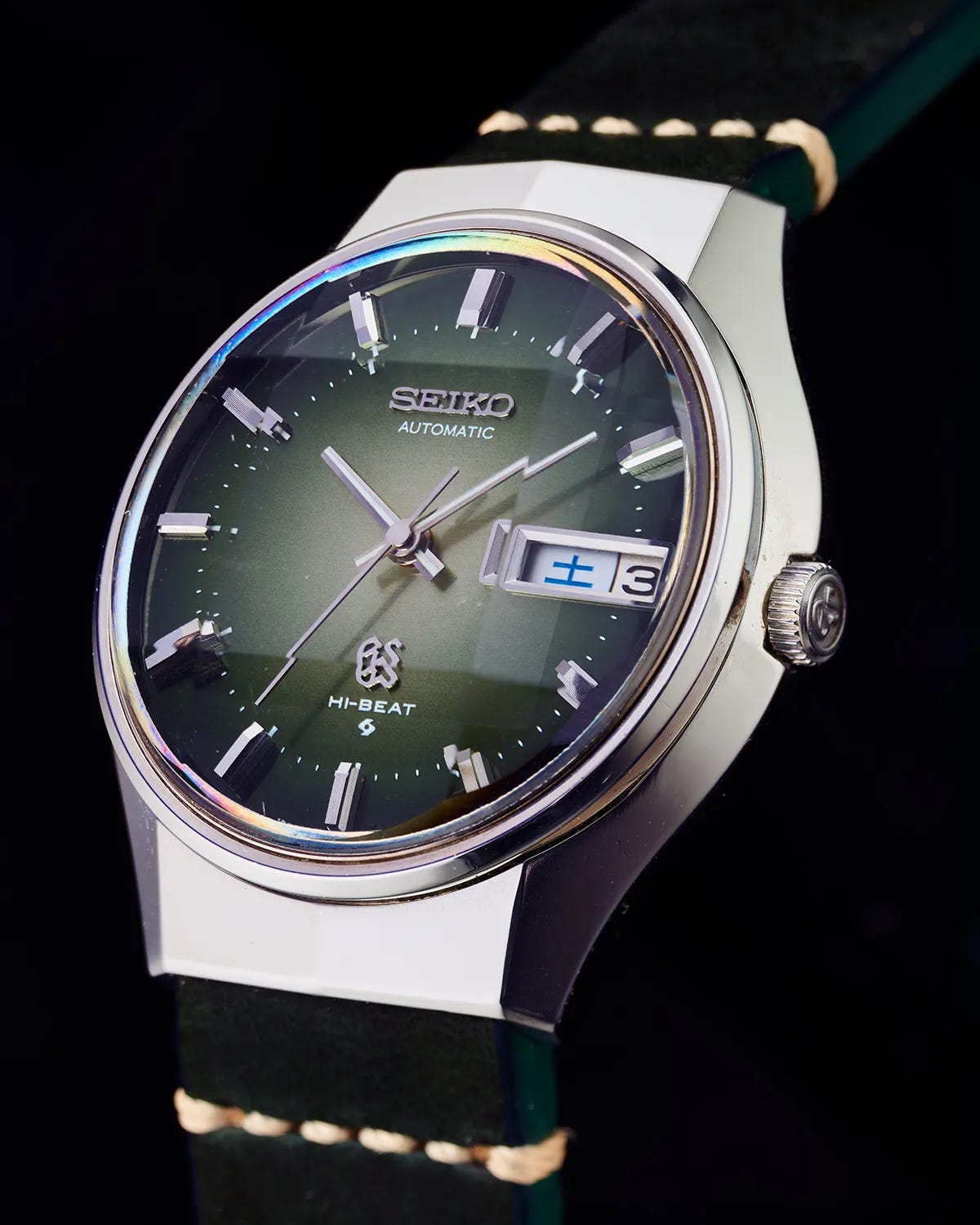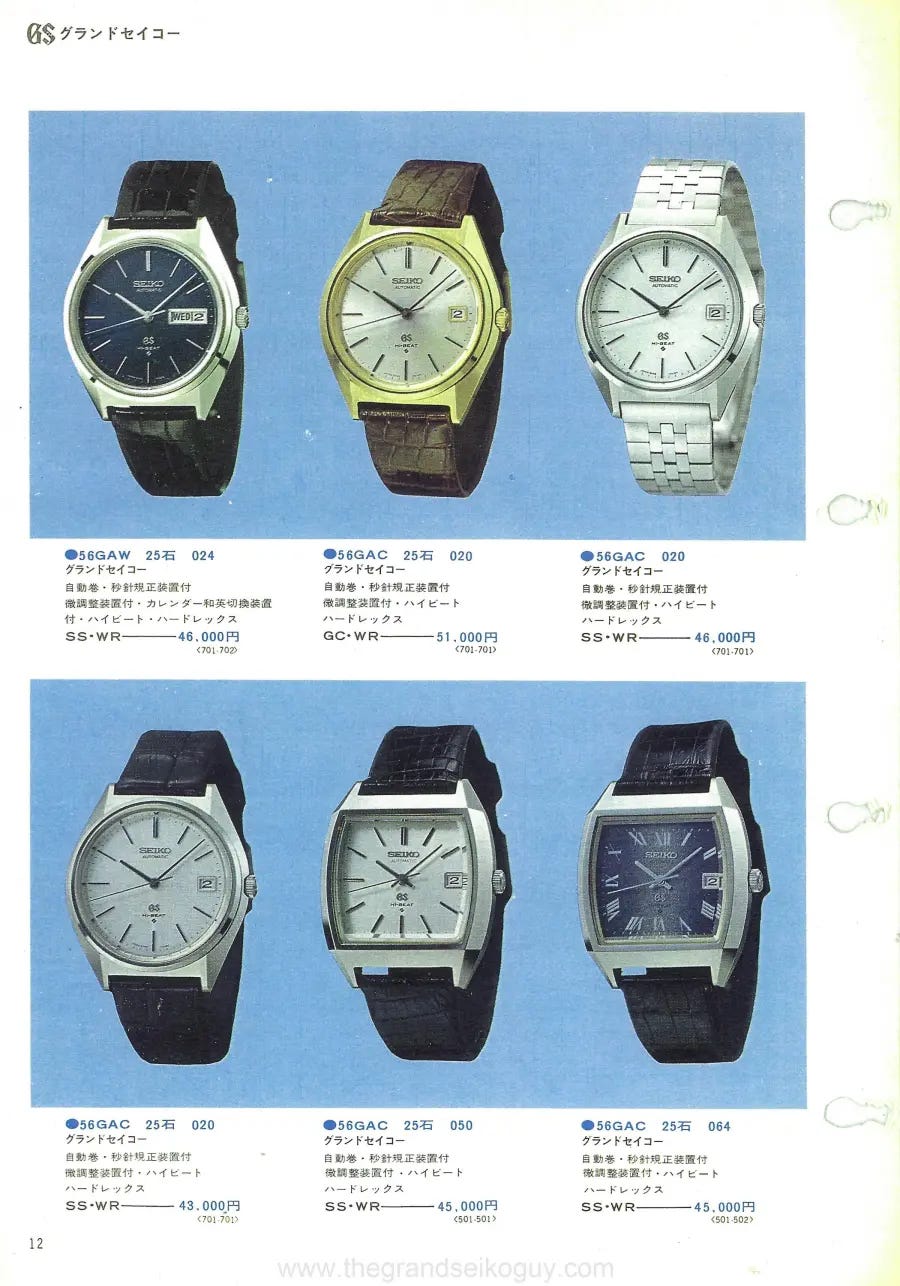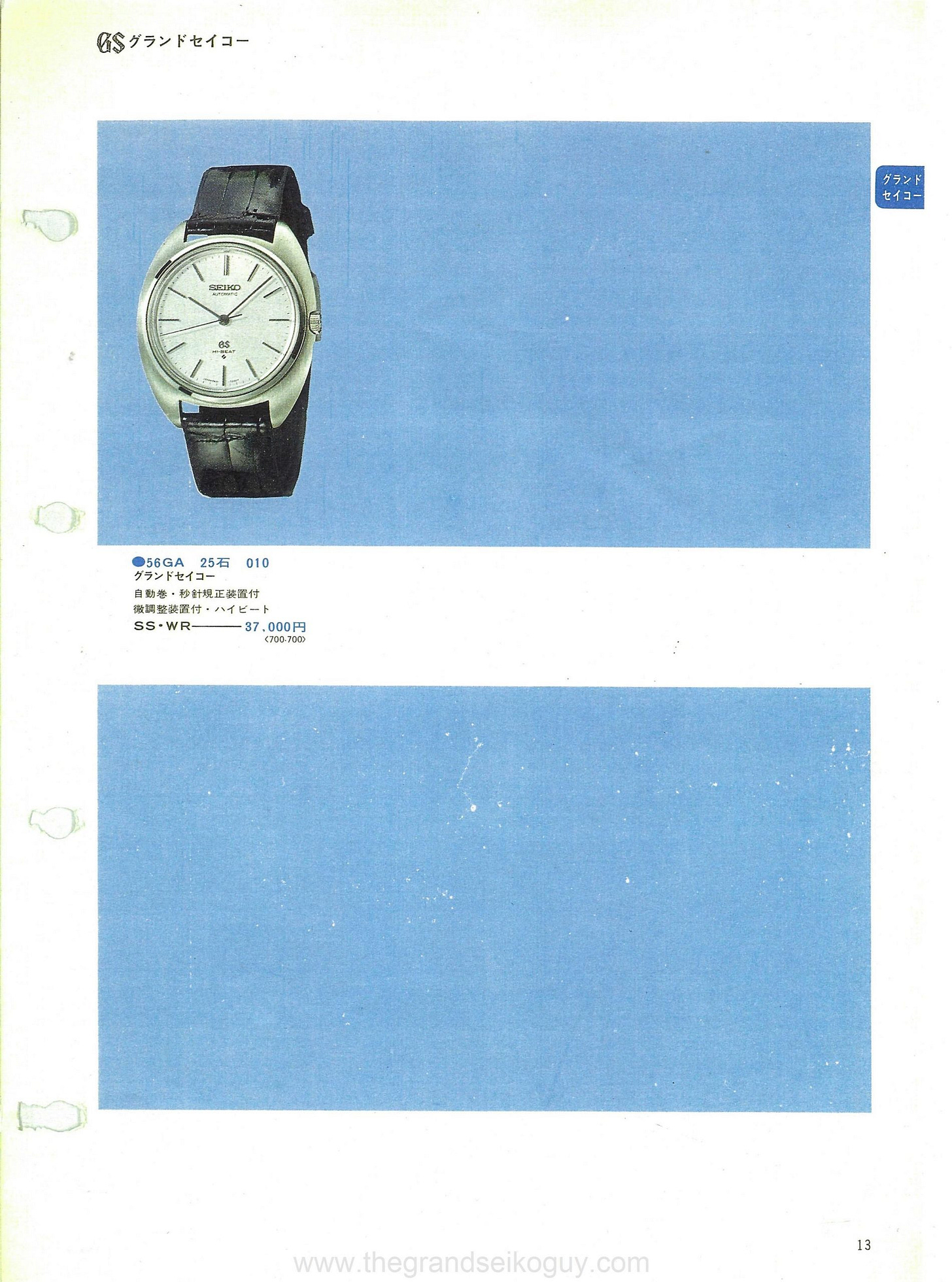Preamble
For the benefit of those subscribers who have signed up recently, each week I publish an article featuring scans of vintage Grand Seikos that appeared in the Seiko catalogues of the 1960’s and 1970’s.
Although based on the articles originally published on TGSG website, these articles will be updated where appropriate with additional knowledge gained in the three or so years since they were first made available.
Additionally, since I now have the complete set of the catalogues, I am able to publish these articles in the correct chronological order - something that wasn’t possible when posting to the main website since, when starting out documenting the catalogues, I hadn’t completed my collection of them.
You can view the previously published newsletters in this series here.
The Seiko 1973 Catalogue Volume 1
If you are really paying attention you will notice a couple of odd things this week.
Firstly - the image above, which was scanned from a copy of the first volume of the 1973 catalogue kindly provided by The Seiko Museum in Tokyo back in 2019 (I have since acquired a copy of this catalogue for my own library), looks remarkably similar to the cover of the folder for the 1972 catalogue. And secondly, there would appear to be no mention of either the year, not volume (note - “volume”, not “number”) of the catalogue.
Similarly to the 1972 catalogue detailed in a previous newsletter, volume 1 of the 1973 catalogue was distributed on loose-leaf hole-punched paper designed to be put into a four ring folder. Whilst there are not many examples of either the 1972 or 1973 volume 1 catalogues out there, every example of each that I have ever seen is either just the collection of the inserts, or the inserts in the exact same folder.
Therefore I think it is safe to say that the binder for the 1973 volume 1 catalogue was the same as that for the 1972 catalogue, and indeed, it is likely that retailers were simply provided with the pages to insert into the binders they already possessed from the previous year.
And why do I call it “volume 1”? Quite simply, because as we will see next week, there is a volume 2 for 1973!
In a similar manner to the 1972 catalogue, the initial pages of this catalogue were presented with the same style as that found in the Special Luxury Catalogues, with the top of the range models shown on fabric backgrounds and the full watch and bracelet (or strap) shown to highlight the precious metal used.
Here are the first three pages -
As expected, the catalogue leads with precious metal cased quartz references, and it is not until we turn to page four that we see the first Grand Seikos, also presented in 18K gold cases.
5645-8000, 5646-8000, 4520-8010, 4522-8010
All four of these references were also featured in the 1972 Special Luxury Catalogue featured in last week’s newsletter.
The photograph of the 5645/6-8000 references (56GAC 086 and 56GAW 086 catalogue codes) shows – more clearly than the photograph in the 1972 Special Luxury Catalogue – the starlight textured dial that replaced the earlier linen-textured dial. This would be the final time that these references appear in a Seiko catalogue.
Both the 4520-8010 and 4522-8010 (45GS 030 and 45GSC 030 catalogue codes) appeared in every catalogue – including the Special Luxury Catalogues – from their introduction in the supplement to 1969’s volume 2, all the way through until this one (excepting the 1970 volume 2 supplement, which of course only introduced new references to the range). No other vintage Grand Seiko made more catalogue appearances than these models.
Following these Grand Seikos, there are two more pages featuring precious cased references, before the catalogue defaults to the more regular presentation of a grid of 6 watches per page, with three pages featuring quartz references before we get back to the Grand Seikos.
There are a total of six new Grand Seikos making their debut in this catalogue, and four of them appear on page 11 of the catalogue.
5646-7010 on bracelet, 5646-7020, 5646-5010 blue dial, 5646-5010 green dial
[Before I get on to discuss the watches, just an aside to highlight that in the 1973 volume 1 catalogue, the watches are shown on a blue background, whereas in the 1972 catalogue, the background is white. They are the only two catalogues distributed on loose-leaf stock, so if you ever come across an unbound example of either, you will be able to identify the year from the background colour.]
First up, in the middle of the top row we see a familiar reference – the 5646-7010 – but now made available on a bracelet, for a premium of 3,000 Yen over the same watch on a leather strap, that we see at the bottom right. From both the photographs and the catalogue codes for these watches (56GAW 020), it is clear that this is the white dialed version of this reference. The silvered dial 5646-7010 with the catalogue code 56GAW 021 that we saw introduced in the 1972 catalogue is never featured again.
Next to it, we see another new reference – the 5646-7030 – that surely presents significantly more value for money at the same price as the 5646-7010 on bracelet. This reference has the most dramatic faceted crystal of any vintage Grand Seiko, and has a wonderfully sculpted case. No apologies for including a studio shot of this highly collectible reference -
The final two new references on this page feature the 5646 movement but in a radically different case design to what we are accustomed to.
With a movement-case reference of 5646-5010, there are two variants of this watch. The first has a blue dial and traditional applied indices, and the second has – for the first time on any Grand Seiko – printed Roman numeral hour markers and a textured and graduated green dial.
Time and date versions of these watches make up the final two new references to be featured in this catalogue, that we discover featured on turning to page 12.
5645-5010 white dial, 5645-5010 charcoal dial
The two references are pictured in the bottom right of the page. Once again, we see the same movement-case code – of 5645-5010 this time to indicate the time and date 5645 caliber – being used for two watches with different dials, one of which is matte white with regular applied indices, and the other a graduated textured dial – probably best described as charcoal in colour – with printed Roman numerals.
The final (men’s) Grand Seiko in the catalogue is shown on its own on the next page. Whilst the 5641-7000 isn’t a new reference, I might as well include the scan of the page here for completeness.
And that’s it!
The cull begins
You could be forgiven for thinking this catalogue has come to a bit of an abrupt end as far as Grand Seiko is concerned, and that thought would be for good reason.
Just 17 men’s Grand Seiko references are featured – fewer than half the number that appeared in the 1972 catalogue.
Among those references dropped are all those from the 61GS series including the Specials and VFAs - solid proof if ever it were needed that the 56GS series was the replacement for the 61GS, not a line to sit alongside it. The cap gold cased 4520/2-8000’s are gone, leaving just the 18K gold 4520/2-8010’s to represent the 45GS series, although as mentioned above, this would be their – and indeed the 45GS series in its entirety – final appearance.
Although we still see the solid 18K gold cased 5645/6-8000, their steel cased counterparts have been deleted from the range. The other 18K gold cased 56GS references – the 5641/5/6-7005 and 5641/5-5000 – are missing, although all these five references will return for a cameo in 1973’s second volume.
The final 56GS stainless steel references missing, and that won’t be returning, are the 5645/6-7000’s, the aforementioned silver-dialed 5645/6-7010, and the blue dialed 5645-7010.

